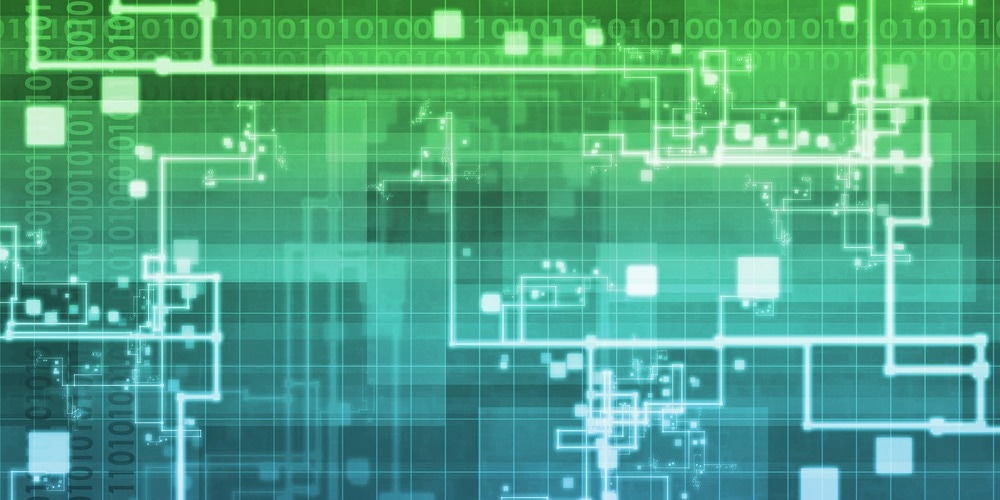Metrology is the science of measurement and applications of measurement. Today, advanced sensors equipped with smart computer chips, connectivity technology, and artificial intelligence are bringing the metrology industry into the twenty-first century as a key component of Industry 4.0, and as a field that can analyze the smallest possible measurements.

Image Credit: kentoh/Shutterstock.com
The Traditional Role of Sensors in the Metrology Industry
The metrology industry is concerned with the science of measurement and its application to a wide range of industries and sectors. It involves the development, calibration, and use of measurement equipment like sensors, as well as techniques and standards to ensure that measurements are accurate and consistent.
The metrology industry plays an important role in ensuring that products and processes meet established standards and specifications and that they perform as intended. Metrology is used in a variety of sectors, including manufacturing, aerospace, automotive, healthcare, and energy. The metrology industry plays a crucial role in promoting quality, safety, and efficiency in these sectors.
The traditional role of sensors in the metrology industry is to accurately and precisely measure physical quantities such as temperature, pressure, displacement, and other parameters. These measurements are used to determine the quality and performance of products and processes, ensuring that they meet established standards and specifications.
The data from sensors is typically recorded and analyzed to provide insights into the behavior of materials, components, and systems, helping to identify and diagnose potential issues or failures. The data from sensors is critical in making informed decisions in the design, development, and production of products, as well as improve overall quality and efficiency.
Metrology, Sensing, and Industry 4.0
Industry 4.0 refers to the fourth industrial revolution, characterized by the integration of advanced technologies such as the Internet of Things (IoT), artificial intelligence (AI), and robotics in manufacturing processes to increase efficiency and productivity. As this concept becomes a reality, there is a growing demand for automated metrology techniques powered by advanced sensor technologies.
Metrology automation utilizes automated systems like sensors to measure and analyze manufactured products. This can simplify the measurement process and enhance the precision, dependability, and consistency of collected data. Through the automation of the measurement process, manufacturers can mitigate errors, create higher throughput rates, and enhance product quality.
Digital sensors like MEMS (micro-electro-mechanical systems) are easily integrable into IoT systems at large scales and low costs, producing vast amounts of data for subsequent use in ML and AI systems. However, their precision and reliability may be questionable from a metrological perspective. Calibration or thorough characterization of these sensors may be economically unfeasible. As a result, new methods for characterizing these sensors are being developed.
The metrological characterization of IoT networks and similar systems poses numerous challenges, according to the authors of a recent study published in the journal Measurement: Sensors. One critical challenge is ensuring the precise and accurate communication and assessment of the measured data.
Typically, individual IoT devices provide connectivity over standard network interfaces. To communicate the data, the OPC-UA (Open Platform Communications - Unified Architecture) protocol is put forward by researchers as a de-facto standard in the industrial sector. OPC-UA defines basic concepts and infrastructure for communication between the individual instruments (OPC-UA clients) and a processing instance (OPC-UA server).
In IoT systems employed in Industry 4.0, sensor data is the source of all information. Therefore, the sensor's essential characteristics, such as type, quantity, unit, uncertainty, and quality, must be made available in a machine-readable format. The OPC-UA framework employs information models to achieve this goal. Nevertheless, these models are being developed separately within distinct disciplines.
Advanced Sensors for Quantum Scale Metrology
One method of quantum metrology that employs the concept of quantum entanglement to surpass the Rayleigh criterion is the utilization of the NOON state of light. The NOON state comprises several particles of photons, or any other Bosonic field particle, which are interdependent.
To achieve surface measurements, the NOON state is produced in a Mach-Zehnder interferometer. Research has demonstrated that this approach can enhance accuracy in surface metrology and image resolution in quantum lithography.
A Mach-Zehnder interferometer is an optical device used to measure the phase difference between two beams of light. It consists of a source of light that is split into two identical beams by a beam splitter, which is then recombined at a second beam splitter. The interference pattern created by the recombined beams depends on the difference in phase between the two beams, which is influenced by any changes in the optical path length of either beam.
The Mach-Zehnder interferometer is used in a wide range of applications, including telecommunications, quantum information processing, and precision metrology. In metrology, the Mach-Zehnder interferometer can be used to measure small changes in length, such as those resulting from the deformation of a surface or the presence of a material on a surface.
Quantum entanglement-based techniques in multipartite systems, such as the NOON state, have been found to be essential in achieving maximum sensitivity in surface measurements. These techniques enable differentiation between light sources that are closer together than the minimum feasible distance as stipulated in the Rayleigh criterion.
In the future, metrology will be capable of more precise and high-resolution measurements at a greater speed and with more autonomy. This will be a result of advances in sensor technology, as well as applications of AI and information technology.
References and Further Reading
Abbasi, I. (2022). Metrology in the Digital Era. [Online] AZO Materials. Available at: https://www.azom.com/article.aspx?ArticleID=21689
Eichstädt, S., et al (2021). Metrology for the digital age. Measurement: Sensors. doi.org/10.1016/j.measen.2021.100232.
The Increasing Role of Metrology Automation in Smart Manufacturing. (2023) [Online] Metrology News. Available at: https://metrology.news/the-increasing-role-of-metrology-automation-in-smart-manufacturing/
Pilkington, B. (2019). Surface Metrology from a Quantum Perspective. [Online] AZO Quantum. Available at: https://www.azoquantum.com/Article.aspx?ArticleID=159
Disclaimer: The views expressed here are those of the author expressed in their private capacity and do not necessarily represent the views of AZoM.com Limited T/A AZoNetwork the owner and operator of this website. This disclaimer forms part of the Terms and conditions of use of this website.